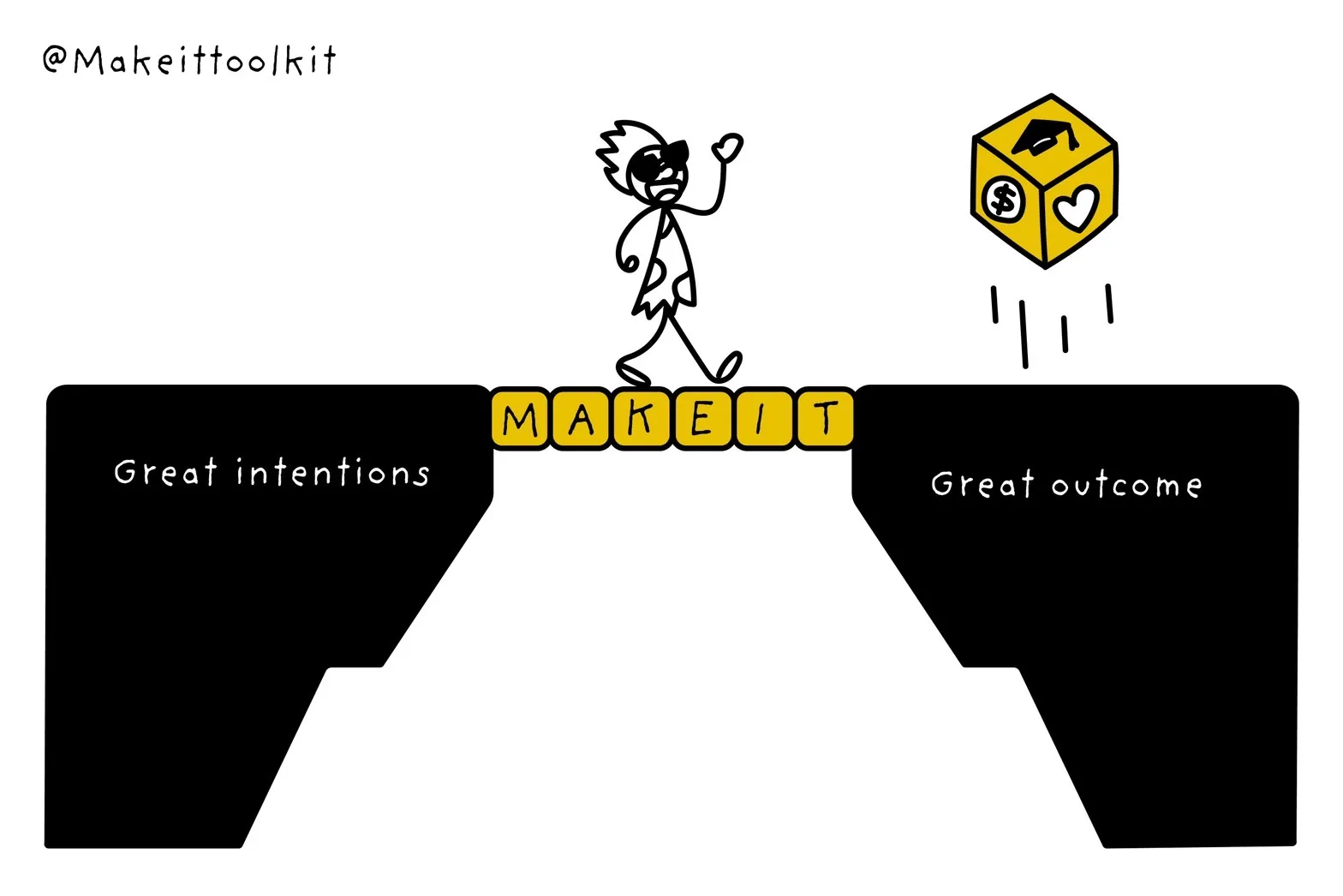Barriers are everywhere.
Carl Jung is quoted as having said, “To ask the right question is already half the solution of a problem”.
This is true for all problems, and especially so, for behavioural problems. When we are faced with solving for behavioural change, we must start with the right questions.
While our tendency is to think of nudges, persuasive messages, and incentives, sometimes, it helps to pause and ask ourselves what is actually stopping a behaviour from happening..
This is called identifying barriers to behaviours.
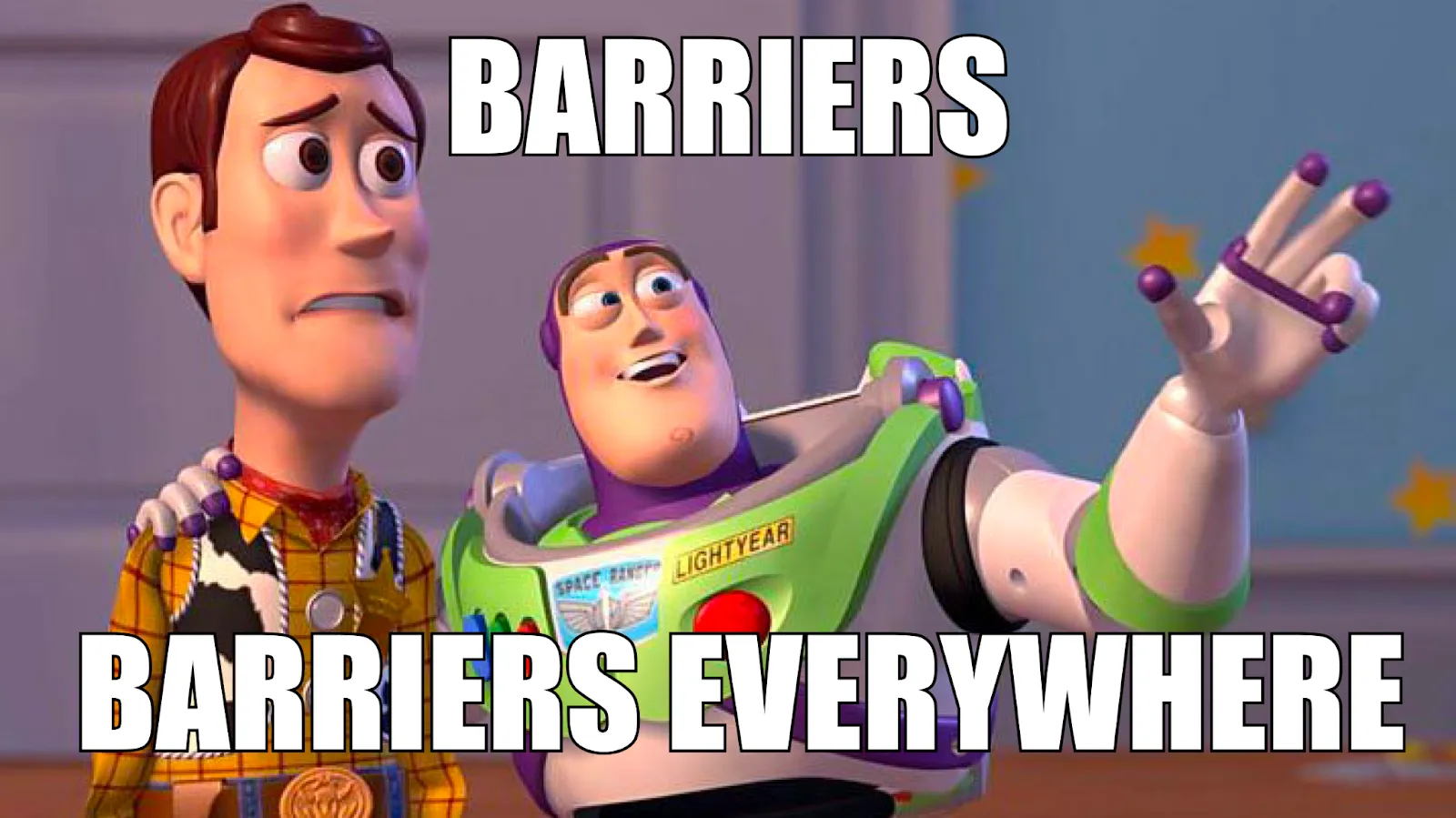
In her exceptional new book, “How to Change: The Science of Getting From Where You Are to Where You Want to Be”, Wharton professor Katy Milkman discusses the importance of understanding barriers.
Barriers are all the little (and sometimes big) “friction points' in the way that prevent people from doing what they want to do and achieve their goals.
They make inaction easier than action.
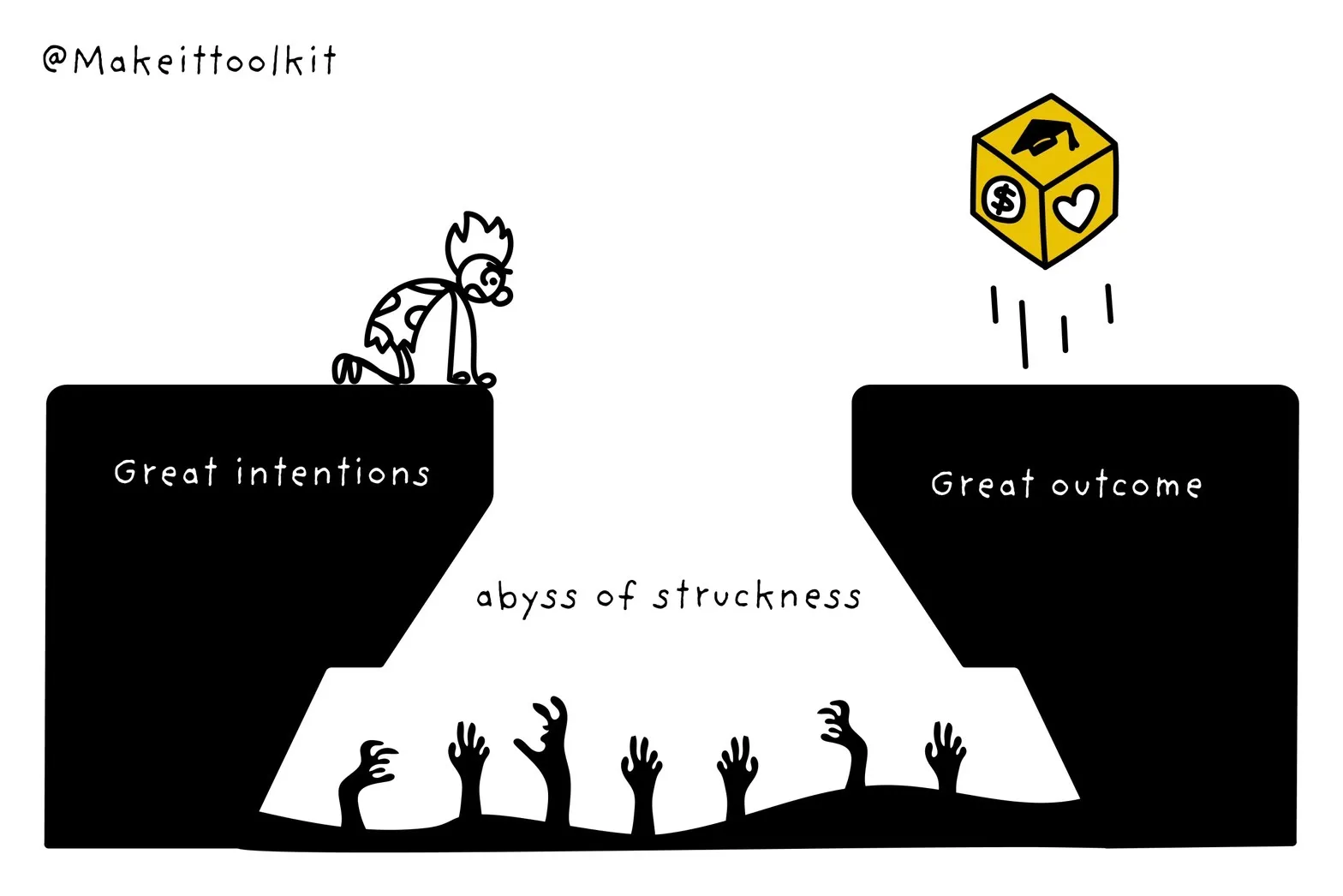
While leveraging motivational drives is often the right strategy to pursue, designers and managers should also be asking themselves how to reduce friction first.
Instead of asking “how can I persuade and motivate people to act?, we should be asking ourselves “why are people not doing the desired behaviour?”.
If your goal is to sell something to your customers, ask yourself: why wouldn’t they buy them? If you’re building a new fitness app, work hard to uncover why your audience is not exercising. Is it because of lack of time? Or because they think they don’t have time? Answering these questions will help you identify the right behavioural strategy.
“Answering this question will help you identify the right behavioural strategy”.
As Dan Ariely suggests, oftentimes the best behavioural strategies entail making things easier, more vivid, and by simply reminding people to take action.
Why are barriers underrated?
While we make the case for starting all behavioural problems by identifying barriers, we also understand that is not the natural course of action designers tend to take. There are at least 3 explanations for this:
1. We are biassed towards addition
We often see our value as builders, or “adders.” In a recent paper published in Nature, researchers suggested that “People systematically default to searching for additive transformations, and consequently overlook subtractive transformations.”
⚠️ Barrier Alert! The recently discovered tendency has been named “Additive bias”: the tendency to solve problems through addition, even when subtraction is a better approach.
Take the balance bike. For several decades we taught our kids how to ride with bikes equipped with training wheels. Only recently balance bikes have become quite a thing. For all this time, we have had an inelegant solution (adding training wheels) and overlooked an elegant solution (subtract the pedals out).

The authors continue:
“Additive ideas come to mind quickly and easily, but subtractive ideas require more cognitive effort”.
2. It’s not as sexy
Taking away barriers doesn’t seem as sexy, valued-adding and creative as additive interventions, and so we tend not to prioritise it.
3. Lack of clarity and process
Moreover, most organisations lack a clear methodology to systematically identify, categorise and understand barriers. Only after identifying them and understanding their nature, we can prioritise which ones to address (and how).
Now that we know barriers form such a key part of behavioural problems, let’s understand the different types of barriers and how to understand them.
What types of barriers exist?
In our work as behavioural designers we have encountered hundreds of barriers. But how do we go about identifying barriers?
Here’s a method we find useful.
Keeping in mind Lewin’s equation (what we, at Make it, call the “1st law of Behaviour”) that reminds us our behaviours are a function of who we are (with our own believes, values, motivations and limitations) and the context within which we make decisions - the first question to ask is, are the barriers we are trying to overcome of the Person or the Environment, or both?

Even within Person and Environment, there are different types of barriers.

Barriers of the Person
Barriers of the person can be both physical and psychological.
Physical barriers refer to barriers such as lack of energy, lack of skills or capabilities. Psychological barriers refer to a multitude of factors, from having to think and/or make a decision (the more complex the decision, the bigger the barrier) to all the biases, heuristics, beliefs and motivational drives that influence our choices and behaviours.
While identifying physical barriers is relatively simple (generally through accessibility audits), identifying psychological ones is often a more daunting task.
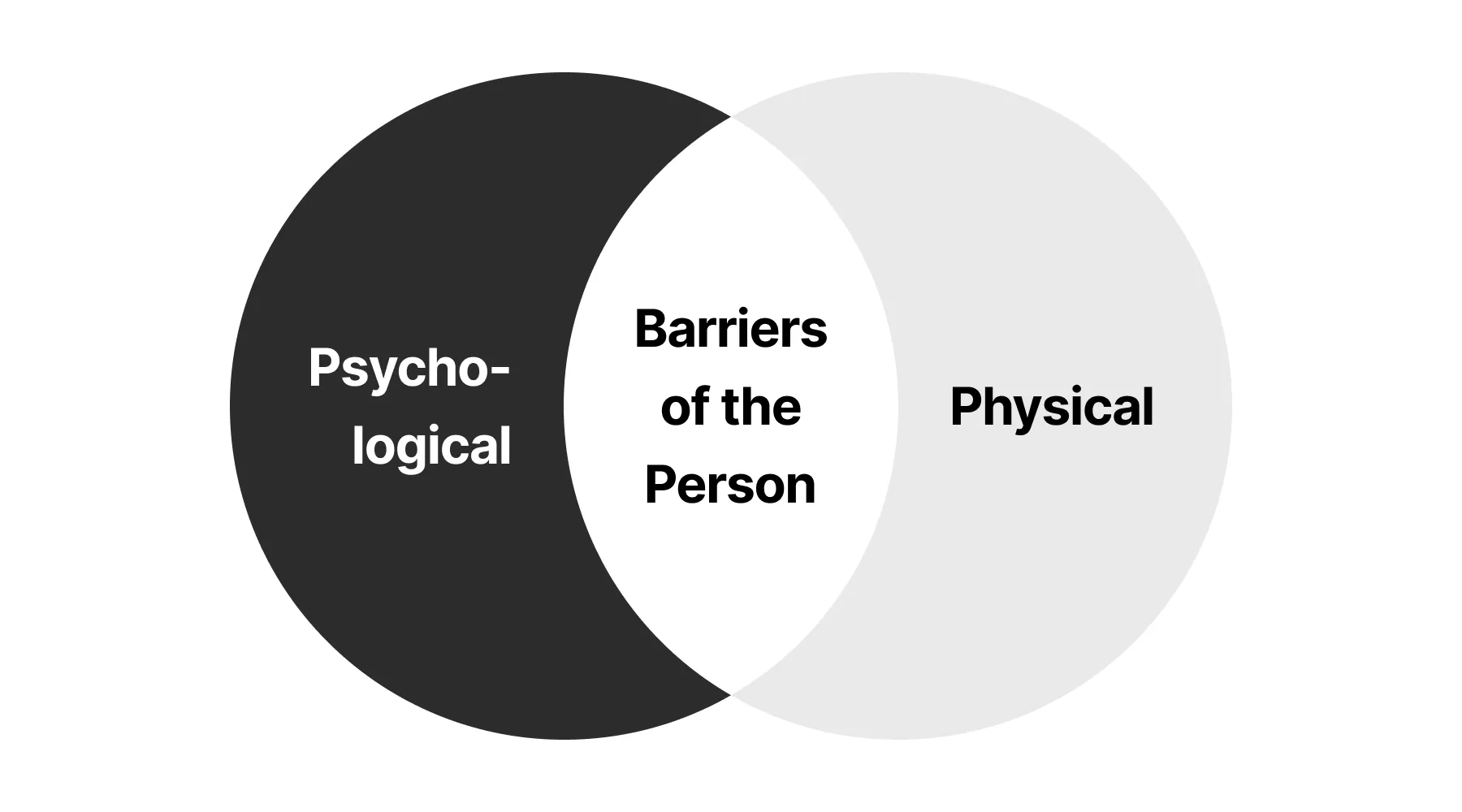
Luckily we are “predictably irrational” and we can make use of a wealth of knowledge documented by behavioural scientists.
Barriers of the Environment
The environment refers to a multitude of contextual factors that can reduce or amplify barriers of the persons. They operate at different scales, from the logistical (usually frictions by design), the situation (e.g., contextual factors that create a sense of urgency), to social and cultural context (e.g., the behaviour might be against the social norm) as well as the wider systemic structural barriers (like market structures, government or industry regulations, and infrastructure).
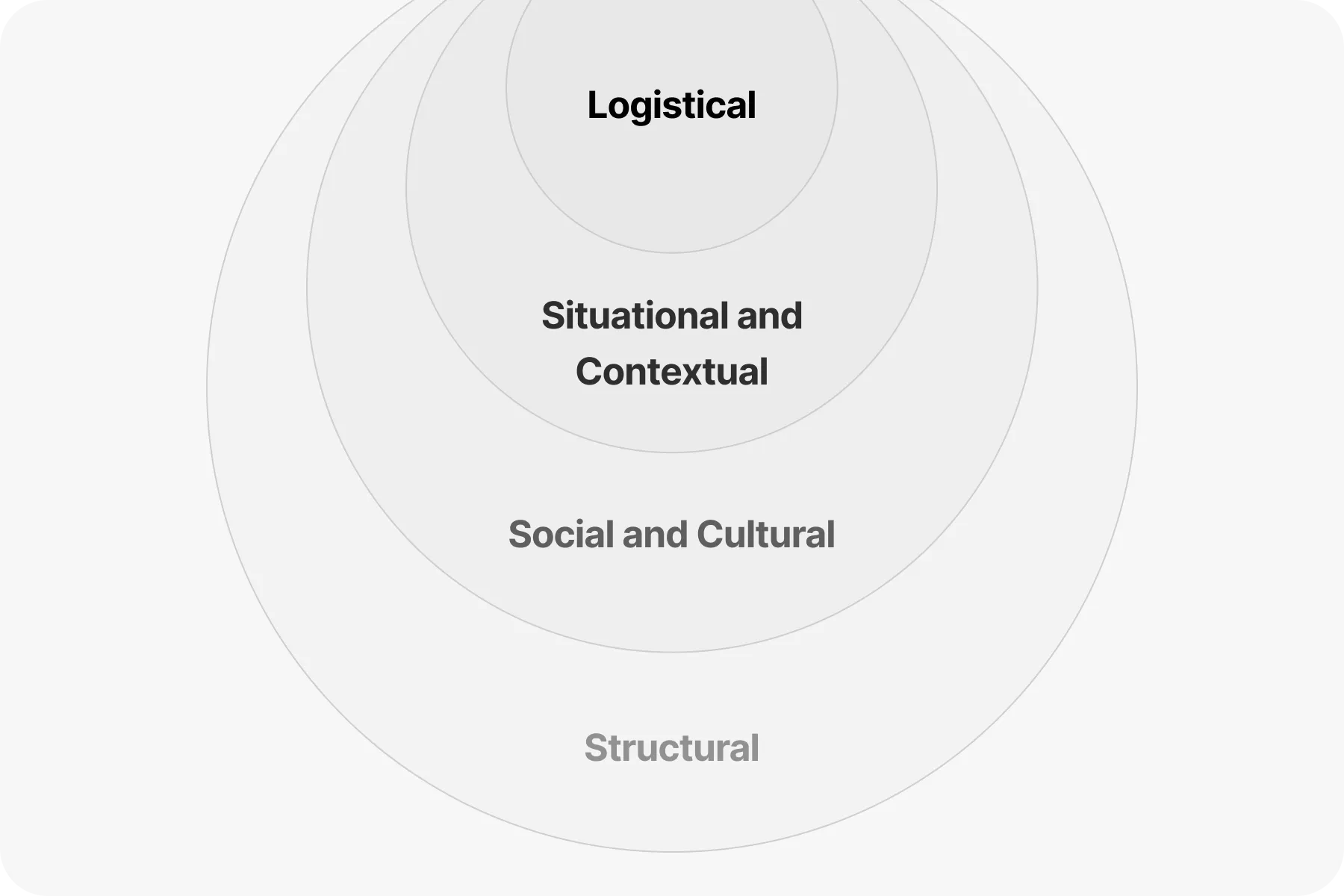
But the barriers we have most control of, are the logistical ones, often created by design (in the analog or digital world): every click, every field, every step, every call, is a barrier to action. A behavioural designer looks at every single user interaction as one more barrier between a person and their goal.
“Every user interaction is one more barrier between a person and his/her goal.”
What causes the barriers?
You might have noticed that all the examples of barriers discussed so far can fall into one of these three bottlenecks that explain why people may not take action or “mis-behave”:
- Lack of Attention/Memory (Do they notice the prompts to take action? Are the prompts timely?);
- Lack of Ability (Can people do it? Do they have the resources in terms of time, information and money?)
- Lack of Motivation (Do they want to do it? Are there conflicting beliefs? Are the competing behaviours or more attractive options?).
This is based on BJ Fogg’s B=MAP model. We call this the 4th Law of Behaviour.
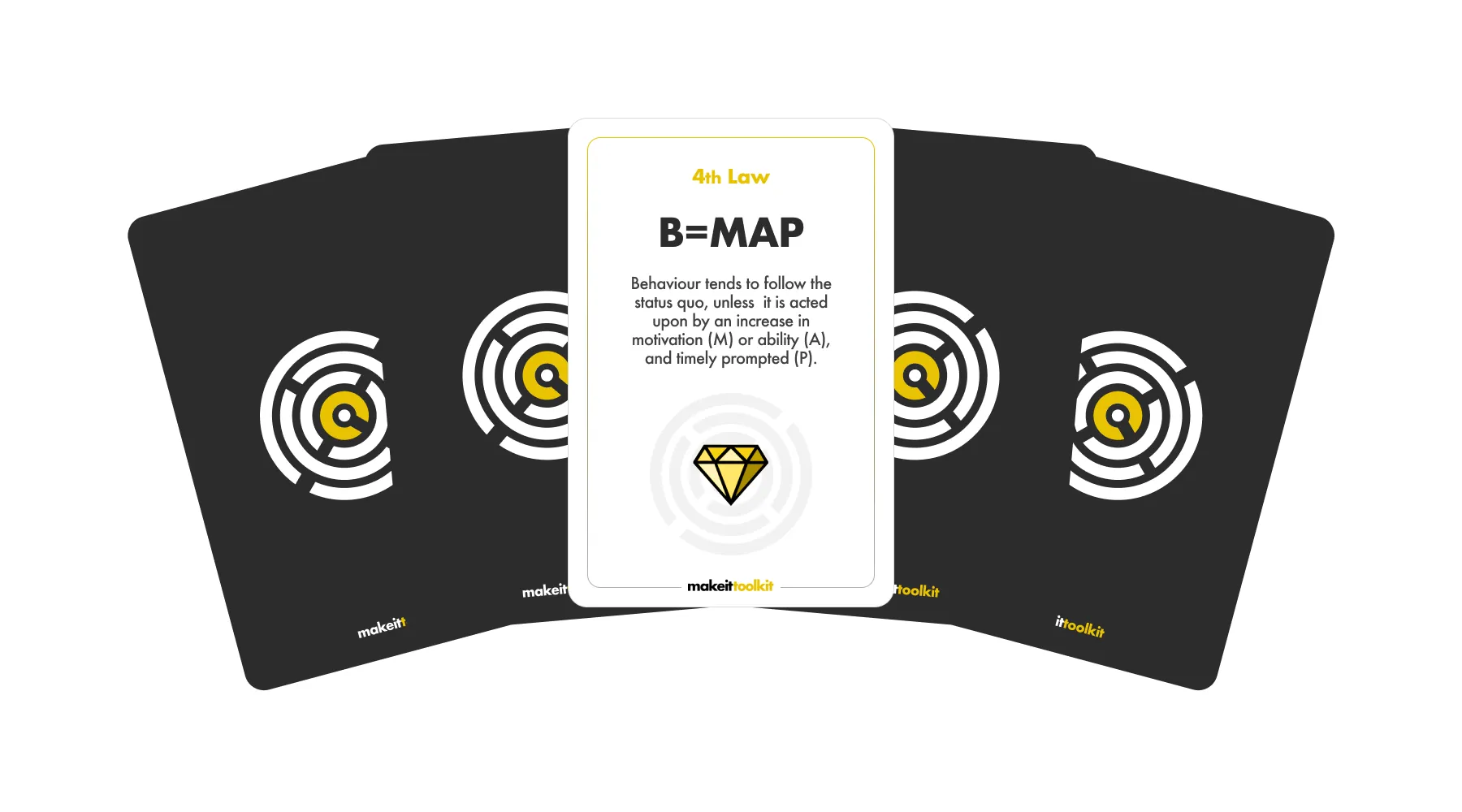
“Only by mapping these three types of bottlenecks in the user journey, we can identify the right strategies to put in place when designing communications, products and services”.
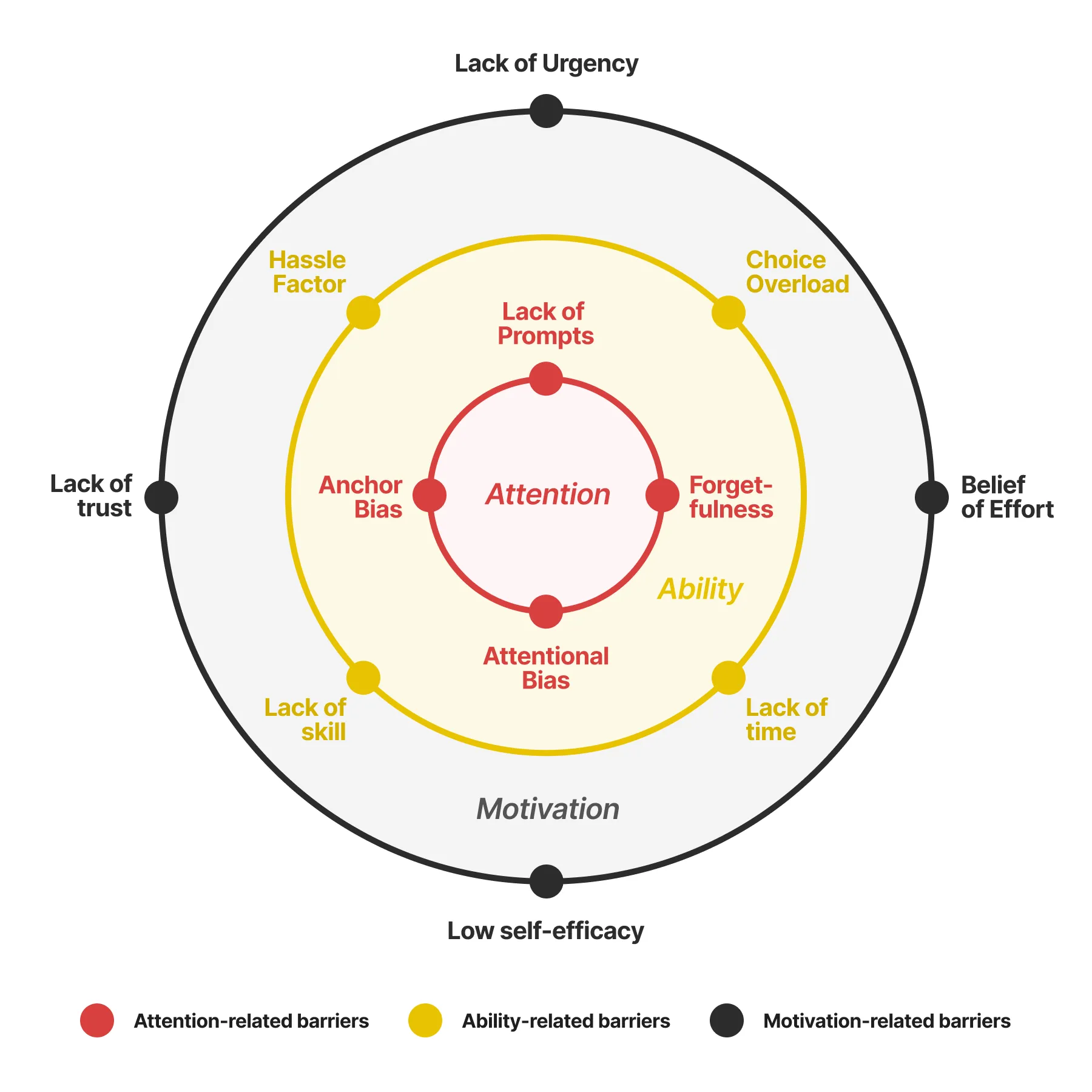
How to identify Barriers: Barrier Mapping
Let’s say you already have a product that is underperforming (your users are not taking actions as frequently as you wish, or they even churn). What can you do to understand the choice environment?
The first thing we do at Make it is undertaking a Behavioural UX Audit. This is a thorough walkthrough to identify, categorise and prioritise all the types of barriers a user may encounter. This should be coupled with interviews to ask people to show you how they would go about making choices, or carrying out tasks across the 4 different phases of a user journey.
Imagine you are working on a fitness app.
After conducting a behavioural UX audit and interviews, you may find out that:
- A group of users drop off during the onboarding phase due to too many steps. This is a logistical barrier related to ability (⚠️ Barrier Alert!: Hassle Factor).
- Another group of previously highly engaged users, has stopped exercising due to an injury (⚠️ Barrier Alert!: Physical Inability).
But for users that disengage later on, you discover that motivation is the culprit. Here’s where psychological barriers come into play.
- Some users thought they would be able to make time for exercise every day after work, but later realised they were being overly optimistic (⚠️ Barrier Alert!: Planning Fallacy);
- Others struggled to get back on track after missing a few days in a row and breaking their streak (⚠️ Barrier Alert!: “What-the-Hell”Effect);
- Another group disengaged from the app because they didn’t want to be reminded of their lack of progress toward their initial goals (⚠️ Barrier Alert!: Ostrich Effect).

Now that you have this information, you can better determine how to overcome these barriers using the 15 universal behaviour change strategies.
In short, why people might not do what is in their best (and your) interest is the question you should be asking before you even consider how you can get people to do something with a motivation-based strategy. Then, deploy the right strategy (or mix of strategies) to bridge the gap!
